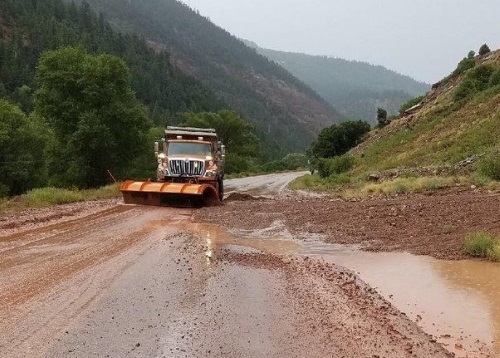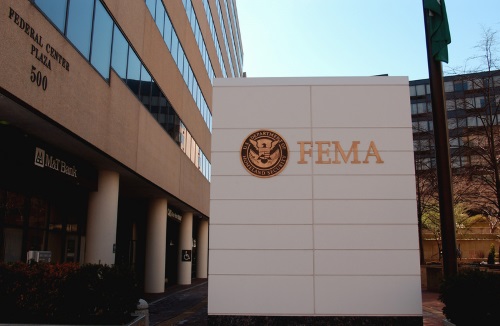As state departments of transportation along the East Coast sharpen their disaster plans ahead of the peak point of the 2020 hurricane season – with mid-Atlantic and Northeastern state DOTs already grappling with flooding and high-wind damage cause by tropical storm Isaias – the Colorado Department of Transportation is deploying strategies to combat the summer monsoon season, which typically runs from mid-July until mid-September.
[Above photo courtesy of Colorado DOT.]
Monsoons – a term coined in the 19th century by the British in India to describe the big seasonal winds and heavy rainfall coming from the Bay of Bengal and Arabian Sea – can create flash flooding, mudslides, and rock falls that can severely damage affect Colorado roadways; causing major dilemmas for the traveling public and Colorado DOT maintenance crews.
For example, a seven-day-long flood event in September 2013 left behind a path of destruction over an area of 2,380 square miles, causing $700 million in roadway damage. Colorado also endured a major rock fall event in 2016 during monsoon season that closed I-70 in the Glenwood Canyon for approximately two weeks.
Those events encouraged state officials to take a deeper look into improving the resilience of Colorado infrastructure. As a result, the Colorado DOT and the Colorado Division Office of Federal Highway Administration worked to develop a plan to proactively identify and address vulnerabilities of the state’s roadway system to threats like flooding and landslides.
As a part of that plan, the two agencies kick-started the I-70 Risk and Resilience or R&R pilot project August 2016; examining 450 miles of I-70 from the Utah border in the west to the Kansas border to identify the potential for future damage and roadway closures due to extreme weather-related events such as monsoons.
The R&R pilot project – completed in the fall 2017 – provided risk and resilience information for assets along I-70 and helped the Colorado DOT prioritize work at key locations where risk is high and resiliency is currently low.
One of the areas identified as an important risk factor to road closures was culvert risk mitigation planning. Lizzie Kemp, Colorado DOT’s resiliency program manager, said that the study found flooding is the largest corridor risk when looking at user costs due to delays, with 80 percent of that risk due to minor culvert failure.
She noted that Colorado has nearly 60,000 culverts that fall into this “minor” category – under 4 feet long – and so the agency first prioritized repairing and/or replacing such culverts found in poor condition along critical routes. To help with that prioritization effort, the agency uses a Geographical Information System or GIS-based Culvert Risk Assessment tool (created by Gerry Shisler for the Colorado DOT) that takes data available statewide and uses it to identify culverts, their condition, and whether they are located on “critical” roadways.
The Colorado DOT found approximately 1,000 culverts across the state were in poor condition on critical routes and the agency than used that information to development and implement a three-step mitigation plan:
- Step 1: Maintenance patrols complete an inspection of identified high-risk culverts and update the condition in the minor culvert database tool.
- Step 2: Identify and document specific proposed mitigation actions for each culvert based on inspection, which could include replacing the culvert or making minor repairs.
- Step 3: If replacement or repair is too costly or not possible, identify and document a specific operations plan which may include increased cleanout frequency and installation of technology to monitor hydraulic flows.
The Colorado DOT also found that minor culvert damage caused more than $94 million to roadway users from delays on the I-70 corridor alone; representing 80 percent of all user costs due to flooding. As a result, the agency expects that preventing minor culvert failure during monsoon flooding events should save hundreds of millions in highway user delay costs across the state.


